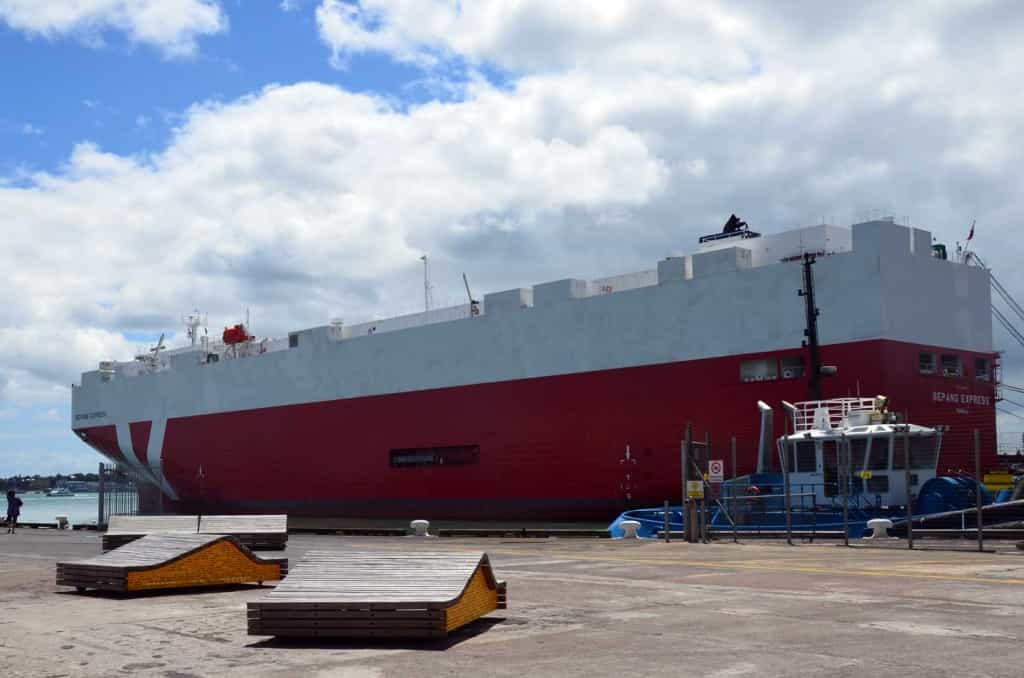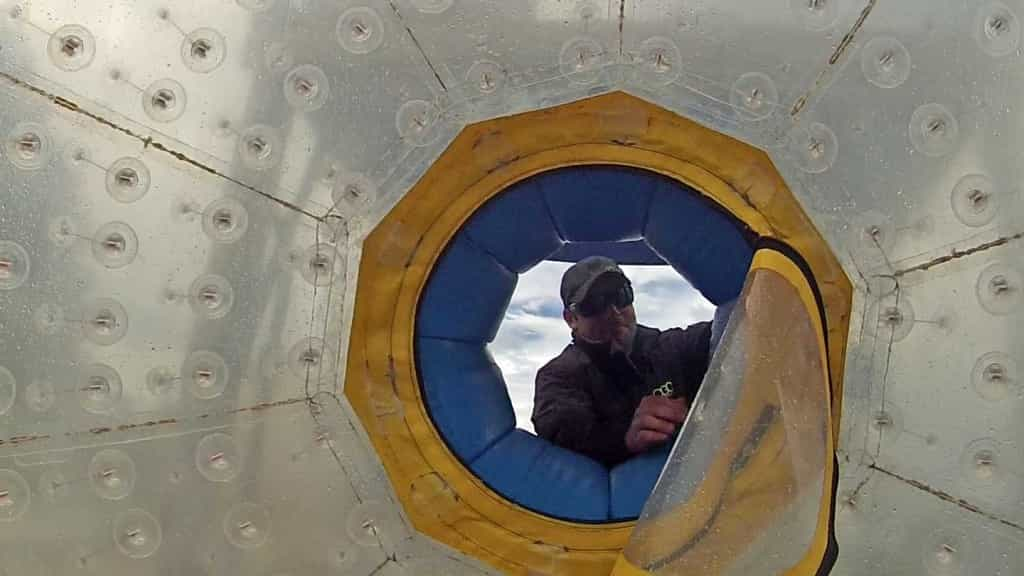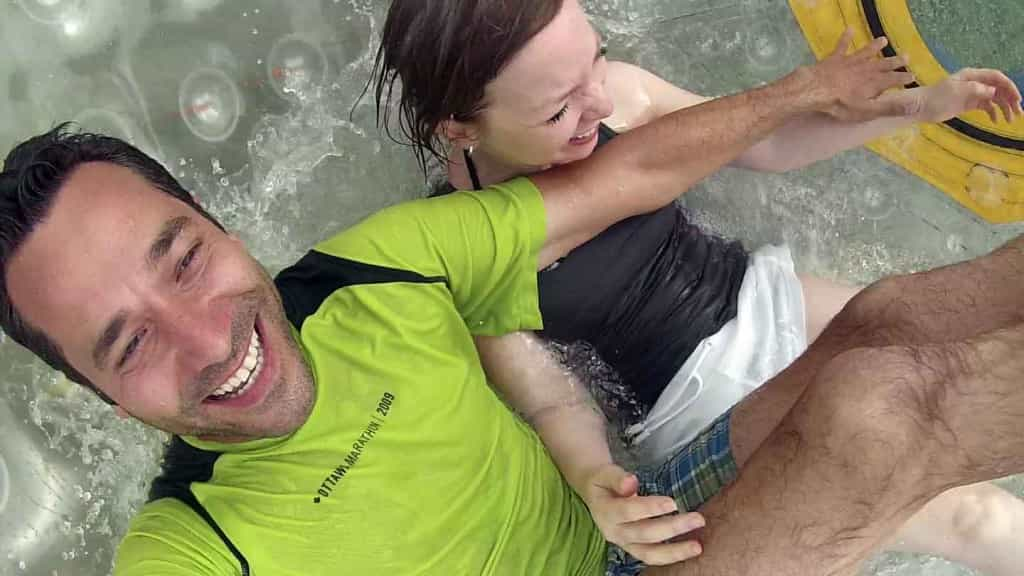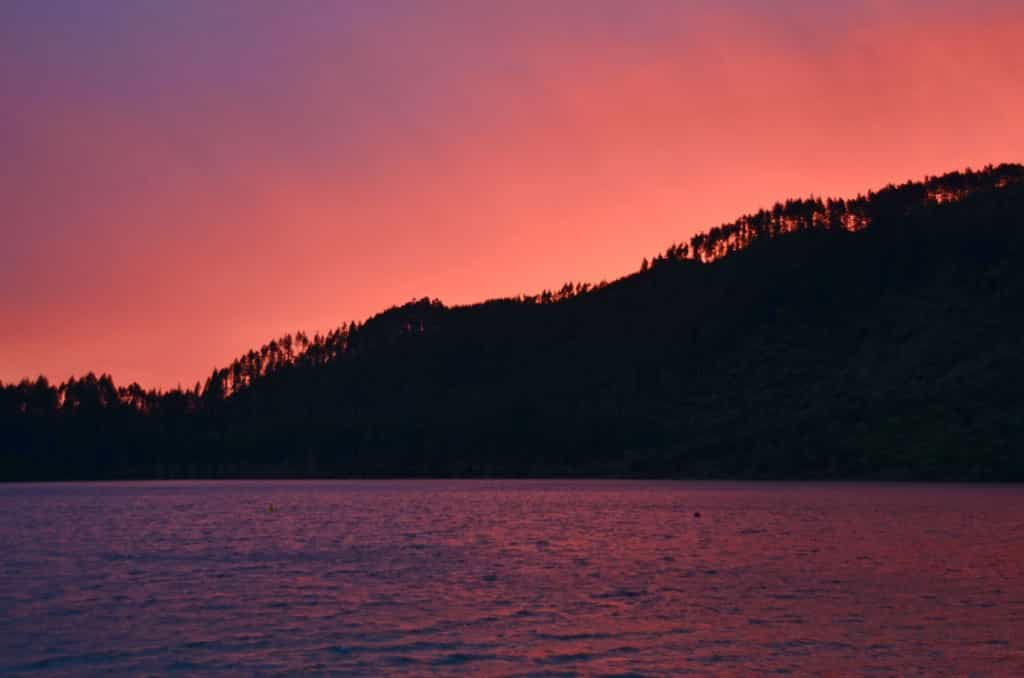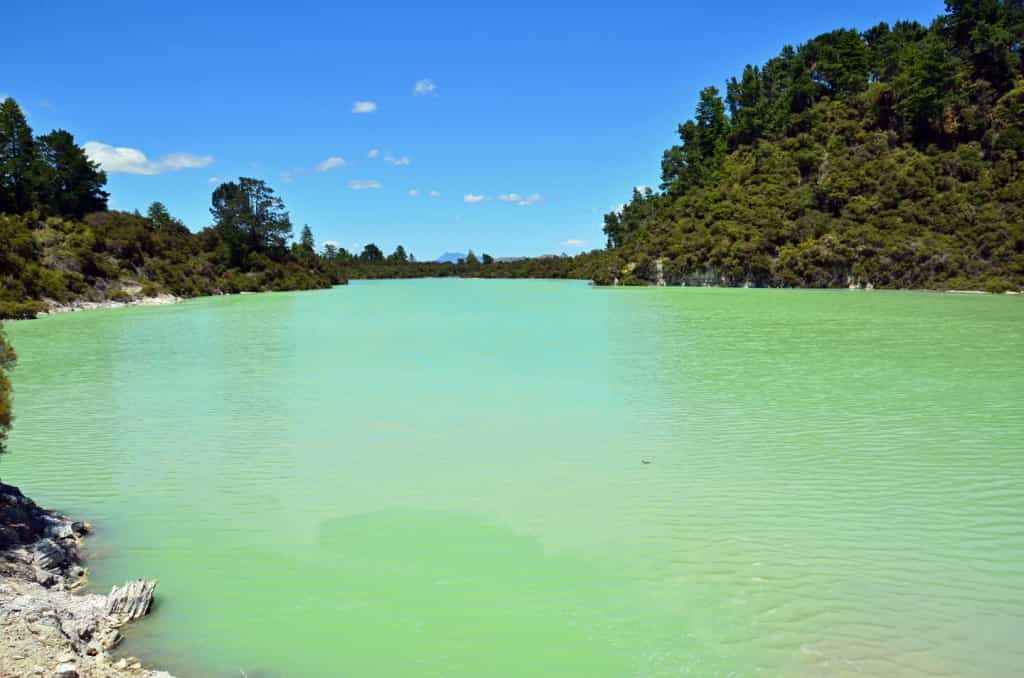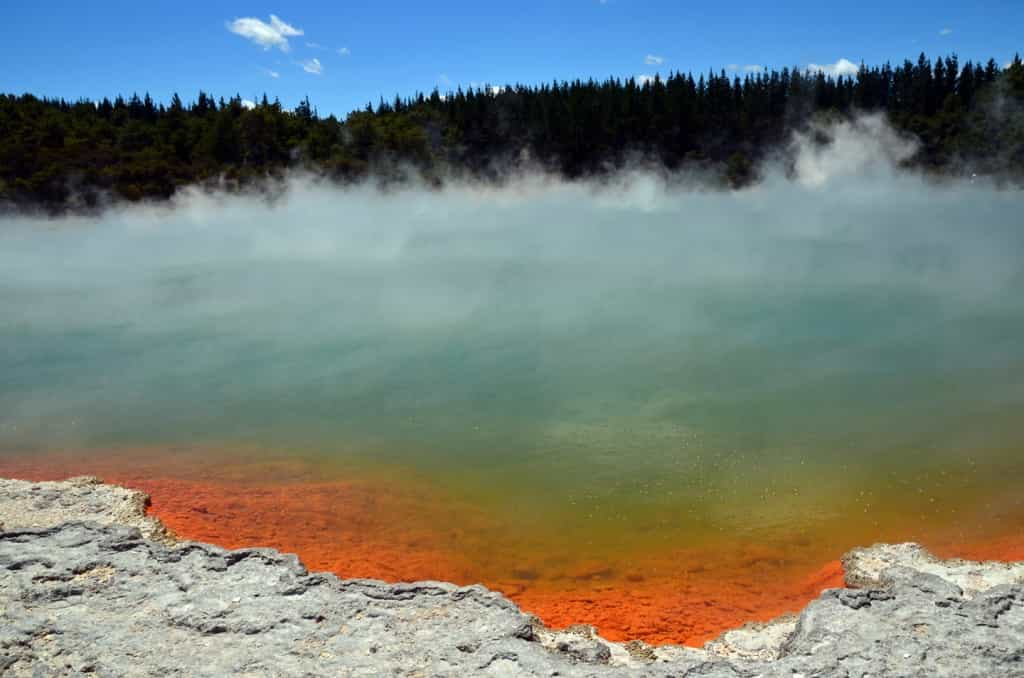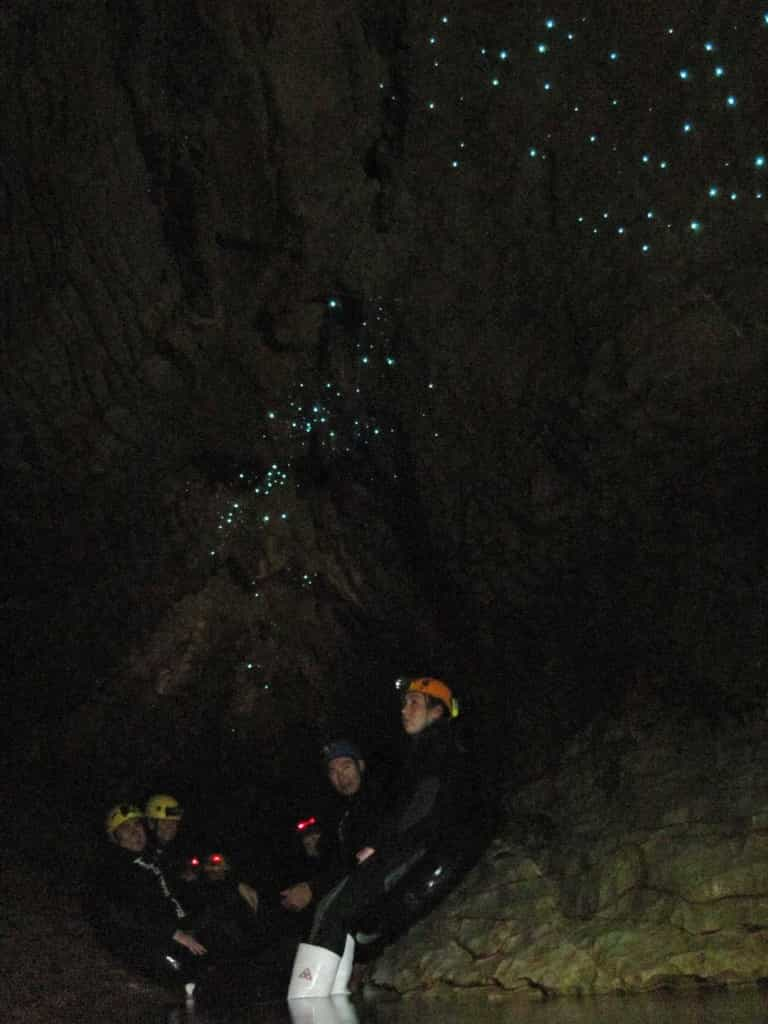After recuperating from New Years Eve in Sydney, we headed down to New Zealand for a two week camper van road trip. I had never before travelled in a camper van, but I was told it was the thing to do in NZ. We rented the beast in Auckland, with the intention of returning it in Christchurch two weeks later. Because prices were high in the peak holiday season, we opted for a discount company called “Lucky Rentals”. The van had 325,000 km, but the employee was honest and said they rarely broke down, but because of their age, sometimes the spare battery, the fridge or the safe stopped working. We were indeed “lucky” and had no problem on the 2,000 km itinerary. Of course, if you put the “pedal to the metal” while driving uphill on the highway, you might be able to reach 65 km/h.
On the topic of motor transportation, I was surprised by the large number of massive cargo ships carrying automobiles. Wikipedia came to the rescue and told me that in the 80’s and 90’s NZ gradually decreased and eventually eliminated the tariffs it used to have in place to protect its automobile industry. Unable to compete, the local plants all closed down and since 1998, New Zealanders import all their cars and trucks.
That fact was hardly the only thing I didn’t know about NZ. Unlike Australia, which I knew very well from having watched many episodes of “Skippy the kangaroo”, the only things I knew about NZ were the abundance of sheep and zorbing. Uninterested in buying a grazing animal, we immediately headed for a zorbing “station”. For the unaware, zorbing involves rolling down a hill in a giant inflated ball, partially filled with water (or not), itself inside a larger inflated ball. You can borrow a GoPro camera and film the experience from the inside. These are stills from the movie. The first one, as we are zipped-in the zorb.
And rolling down the hill. “Ridiculous” is the first word that comes to mind when I think of zorbing, but I must say it was a lot more fun than I had anticipated.
Michelle looks like she is about to kill someone, but she actually enjoyed it as much as I did (except perhaps the fact we shared the inner sphere with 40 litres of water).
Another important fact about New Zealand is that all Lord of the Ring movies have been filmed here. Apparently, I was the only person in the World who did not know that. Since I haven’t read any of the books and fell asleep watching the first movie, I guess it is not surprising. That being said, New Zealand is a country of only 4.4 million people, and it is quite far from… hum… everything really. So unsurprisingly, not a whole lot happens here and the filming of these movies was a huge deal for the country. I did not even have to enter the country to discover that.
Before any flight safety briefing, they usually say “even if you are a frequent traveller, we would appreciate your attention for a few minutes…”. I won’t lie, I never pay attention, except this time. The video briefings on Air New Zealand are actually done by elves, hobbits and whatever other creatures populate the Lord of the Rings universe. Watch it on this Youtube link.
In case the attention of the national carrier is not enough, you can go to the post office and buy hobbit stamps, or just marvel at the 19 gigantic outlines of dwarves on the roof of the main post office in Wellington.
This cinema had rebuilt its facade for the opening of the new Hobbit movie. Out of respect for the most important thing ever to happen in NZ, we went to see it, but thought it was drawn out and a little boring. However, we were amazed by the small but fantastic VIP sections some NZ cinemas have, with enormous reclining seats at the back and a special pre-show waiting lounge. I ordered a glass of wine (a proper wine glass, which you can bring in the theatre), and pre-ordered another glass, which was delivered to my seat at the mid-point of the movie, along with a plate of some sort of tapas for Michelle. All very civilized, and expensive enough to keep annoying teenagers out of it.
When not enjoying indoor urban pursuits (i.e. shopping trips), we marvelled at the renowned beauty of the NZ countryside. However, while I don’t mean to take anything away from it, I must say that coming from Canada, I found it lacking that exotic feeling I like to experience in foreign outdoorsy settings. One can drive a few hours and discover a completely different landscape and NZ packs a lot for its size, but many of the scenery is similar to what you could find in parts of Canada.
This nice lakeside sunset, on Blue Lake, near Rotorua, is a good example. It is certainly beautiful, but I could drive 45 minutes from Ottawa and find something very similar.
What I can’t easily find in Canada is volcanoes, and exploring the geothermal areas around Rotorua was the best part my trip to NZ’s Northern Island. This geyser, the Lady Knox geyser, was discovered when some convict workers saw a hot water pool and tried to do their laundry in it. A few moments later, it erupted and sent them running. As it turns out, injecting soap into it breaks the surface tension keeping different layers of water apart and it goes “woosh!”. I didn’t quite understand the explanation, but the point is that once a day, the park officials drop detergent into the hole.
A few moments later, to the amazement of a few hundred tourists, it erupts. Pictures are taken, sunburns are had and that’s a wrap. Don’t get the wrong impression, the Wai-O-Tapu Thermal Wonderland site is absolutely amazing, but the geyser is not that impressive. My recommendation would be to visit the rest of the site during the geyser show, around 10:00; you might very well have it almost to yourself.
Like in any geologically active area, appearances can be deceiving. This beautiful stream might feel inviting for a quick dip.
Travelling upstream to the little waterfall might make you change your mind, as you realize a lot of it is not water at all. Take a bucket-full from the light blue pond on the top right of the picture, and you’ll have enough chlorine to sterilize your swimming pool, assuming the bucket doesn’t melt!
Further upstream and the colour is completely different.
The amount of life on the surface is indicative of the amount of life underwater: not much, perhaps some bacteria with crazy metabolic pathways?
Another cradle of wildlife. Unfortunately, this being in the developed World (Kiwis even qualify as honorary Westerners, like the Australians), the site is well designed and fenced, which limits the photographic opportunities. Most pictures are taken from above, at a distance, behind fences. In Ethiopia’s Dallol, I was walking on surfaces that would be cordoned off from a hundred meters in NZ.
We came upon what looked like snow, but is in fact a sinter terrace, a “river” of calcium carbonate deposits.
A close-up of the surface.
Eventually we arrived at the most famous location of the site, the “Artist’s Palette”. Swim around this magnificent lake and, as you go from one colour to the next, you will enjoy the health benefits of large concentrations of chlorine, antimony, arsenic, sulphuric acid and all the other good minerals streaking to the surface.
The palette, from the other side. Now THAT is the kind of thing I travel for; nothing like it near Ottawa!
Rotorua is a major tourism centre on NZ’s North Island. Apart from the many geothermal sites and the countless active pursuits (zorbing, parachute centres, canoeing, etc), it also has a very nice city centre. This magnificent building is the old bath centre, now the Rotorua Museum.
Locals enjoying lawn bowling. We watched a bit and it reminded me a lot of curling. I was on the edge of my seat: very, very, anxious… to leave!
Heading straight West, we stopped for a day in Otorohanga and visited the Waitomo Caves, where we went on a “blackwater rafting” tour for a few hours. Essentially, this involves walking in a cave system and going down underwater rivers sitting in an inner tube. Nothing special, but I had never before seen glowworms. You can see them on this not very good picture taken by the guides (Michelle and I are the two red helmet reflections on the bottom left. As a matter of fact, the glowworms are not worms at all, but rather the larvae of the Arachnocampa Luminosa fly. The eggs of that specie hatch in only 20 days, but the larval stage lasts 6 to 12 months. The larvae build nests on the ceiling of caves and, a bit like spiders, hang several threads of silk covered in mucus. They then attract insects to them by glowing, which perhaps suggests to the victims that the light is an opening to the outside world. Once they hatch, the adult flies immediately mate, the female lays eggs and both die in 1 to 5 days. Adult flies do not have mouths and as such, cannot ingest any food. Having accomplished their goal in life at that point, the ancestors of these flies never evolved an ability to feed themselves as adults.
As charming as the area was, we were on a road trip to Christchurch, so we got going South towards the volcanos, in our case Mount Ruapehu. Despite the complete lack of sheep in the picture, this shot is the one that will remind me the most of beautiful New Zealand.
Torua ski field is located at the top of the road. We drove up but, this being summer, there was nothing much happening. An empty parking lot, save for a row of snow cannons. And off to Wellington we were.
#NewZealand

